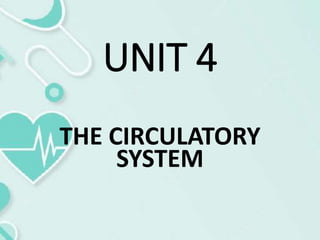The circulatory system is divided into the heart and blood vessels. The heart pumps blood into the pulmonary and systemic circulations. The right side pumps blood to the lungs and the left side pumps oxygenated blood to the rest of the body. The heart has four chambers, valves to ensure one-way blood flow, and a conducting system to coordinate contractions. Arteries carry blood away from the heart while veins return blood to the heart.






































































